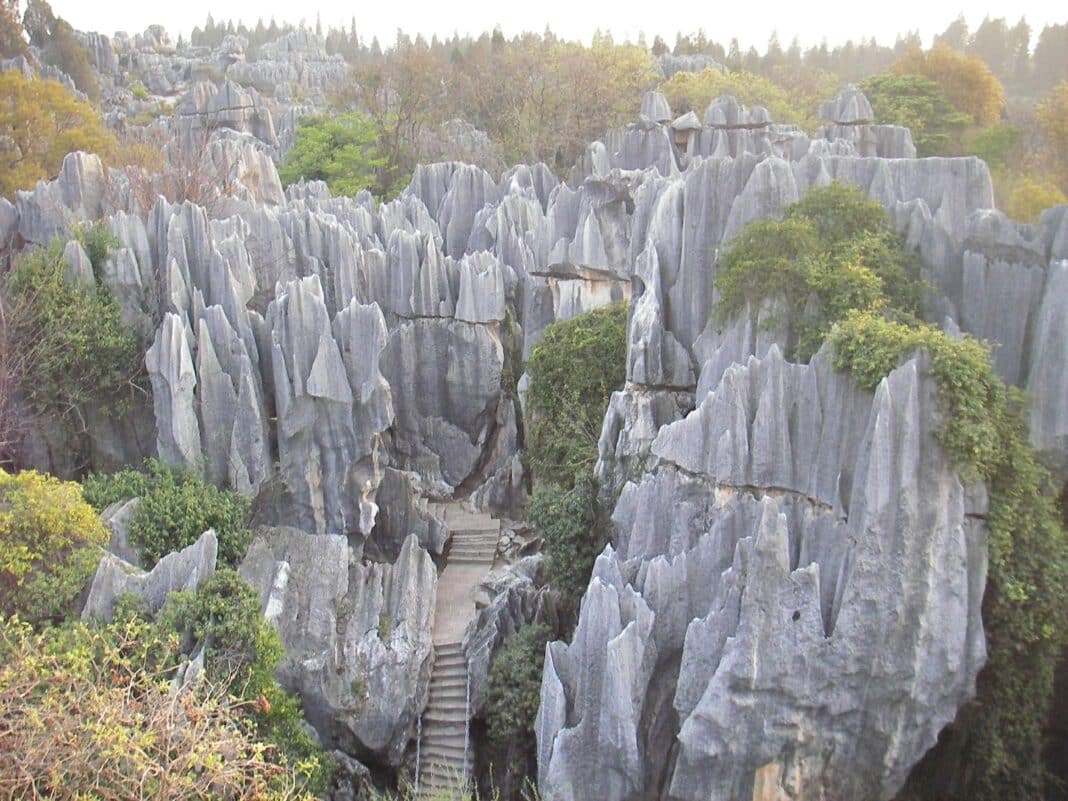Forestry is amongst the industries most impacted by the push towards AI and automation.
According to a report published by Goldman Sachs, the construction industry has 28% exposure to automation and AI replacement – specifically in planting and monitoring.

Combining on-site data collection and satellite technology, AI produces high-resolution maps that provide foresters with crucial information about common tree species.
The project, representing 36% of the world’s planted forests, is helping scientists better understand East Asian forests, their distribution, and forest management resilience to climate change.
They have amassed a database of 1.3 million sample plots and 55 million trees and are working with 300 scientists across the region.

According to Dr Jingjing Liang, the AI approach helps researchers crunch a massive amount of data “measured both from the ground and also from remote sensing.”
Dr Liang is an Associate Professor of Quantitative Forest Ecology and said, “The study complements the research portfolio of the Institute for Digital Forestry with an international perspective.”
“It will also enrich our understanding of global forest ecosystems and their sustainable management.”
The project is led by Akane Abbasi, a PhD student in forestry and natural resources who works with 15 co-authors.
These researchers are part of Science-i, a web-based platform, and the Global Forest Biodiversity Initiative (GFBI).

Nancy Harris, the research director of Land and Carbon Lab and Global Forest Watch at World Resources Institute, emphasises the significance of this collaboration.
“Our partnership with Purdue and FAO embodies our mission to deploy breakthroughs in geospatial monitoring that power solutions for sustainable landscapes.”
The most significant challenges to date have been integrating data from different sources with different formats, types and spatial extent.
“Some data cover only China. Some data cover only Japan. Some data cover China and South Korea. They differ in spatial extent. They also differ “in relatability in terms of whether it’s measured on the ground or from space,” Ms Abbasi said.
To overcome these challenges, the researchers have employed “an ensemble machine-learning approach.”

They use AI to train three machine learning models, “accounting for imperfections in both the data and the model.”
“When “I say I study forest ecology, people assume that I go to the forest, measure something, then come back and analyse the data,” says Ms Abbasi.
“But this is not what we’re doing here. We deal with vast spatial extents and study nature using cutting-edge AI and machine learning.”
The Global Impact
The results to date reinforce the FAO’s Global Forest Resource Assessment (FRA) and offer “detailed spatial locations of forest plantations at small resolutions.”
FAO is now actively collaborating with the research team to leverage AI to estimate global forest growth.
Globally, governments are considering tree planting and afforestation to meet climate commitments.
In 2019, researchers calculated that new trees could suck up 750 billion tonnes of heat-trapping carbon dioxide over the coming decades.
According to the researchers, “That is about as much carbon pollution as humans have spewed in the past 25 years.”
“This is by far — by thousands of times — the cheapest climate change solution” and the most effective, said study co-author Thomas Crowther, a climate change ecologist at the Swiss Federal Institute of Technology in Zurich.
The report, which former President Donald Trump played down, identified Russia, the United States, Canada, Australia, Brazil and China as having the most room for new trees.
In 2020, the World Economic Forum launched a global initiative to grow, restore and conserve 1 trillion trees worldwide- to restore biodiversity and help fight climate change.
The 1t.org project aims to unite governments, non-governmental organisations, businesses and individuals in a “mass-scale nature restoration.”






